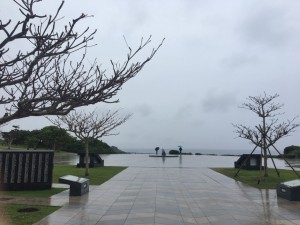Q&A with TOMODACHI Program Participants and TOMODACHI Alumni: Samsara Counts

Samsara Counts is an alumna of the 2018 TOMODACHI KAKEHASHI Inouye Scholars Program.
Samsara Counts is a software engineer, researcher, and diversity in tech advocate passionate about creating ethical, accessible technology for all. She currently works at Amazon.com, Inc. (hereinafter referred to as Amazon) in Seattle, implementing privacy guarantees for Alexa AI. Prior to working at Amazon, she spent a year in Germany as a Congress-Bundestag Youth Exchange for Young Professionals fellow and interned at the Max Planck Institute for Software Systems, researching fairness in artificial intelligence. Her research has received Honorable Mentions for the 2018 and 2019 NCWIT Collegiate Awards and the Best Student Paper Presentation at AIPR 2018. Samsara graduated from George Washington University in 2019 with a Bachelor of Science in Computer Science and Math with a minor in Creative Writing.
This interview was held as a part of our initiative to highlight female leaders who are active in the STEAM (Science, Technology, Engineering, the Liberal Arts, and Mathematics) field, inspired by International Women’s Day (March 8). The interview was conducted on March 30th, 2021 by Reika Mihara, TOMODACHI Alumni Intern (2020) based out of Tokyo, Japan.
In spring 2018, as a student at George Washington University, she had a chance to participate in the TOMODACHI KAKEHASHI Inouye Scholars Program. In this program, she visited Okinawa with other George Washington students for an exchange with the University of the Ryukyus. She recounts how her experience in Okinawa pushed her to pursue the use of technology for peace and justice.
Q1: What do you remember the most from the 2018 TOMODACHI KAKEHASHI Inouye Scholars Program?
My entire program experience was incredible, but there are a couple of moments that I keep coming back to. On the first day of our program, we attended a presentation about Japanese history and foreign policy at the Ministry of Foreign Affairs of Japan in Tokyo. This presentation gave us a comprehensive overview of the Japanese value of pacifism—its implementation in the past century and Japanese cultural opinions on it.
For the next part of the trip, we traveled to Okinawa for an exchange with students at the University of the Ryukyus and a historical tour of the island. It was there, at Okinawa Peace Memorial Park, where what I knew of the history of Japanese pacifism came to life with unforgettable stories of lived experience, leaving a deep impression on me.
The museum at the memorial park was full of eyewitness testimonies, history, and artifacts that brought to life the unforgettable story of the Battle of Okinawa. All of the victims’ names were memorialized in engraved stones wrapping around this beautiful park overlooking the sea.

Okinawa Peace Memorial Park taken by Samsara Counts
Along with visiting the museum and memorial park, our TOMODACHI trip planners set up a once-in-a-lifetime opportunity for us: hearing the testimony of a survivor of the Battle of Okinawa, Zenichi Yoshimine, who was 12 years old when the battle happened. Mr. Yoshimine spoke from his heart, sharing his account of what he experienced. During the battle, he, his mother, and his grandmother survived their neighborhood burning, many close calls with bombs, and fled across the island to avoid the violence. He concluded by showing pictures from when he met up with American veterans of the battle, calling them his friends. He encouraged us all to pursue and live out pacifism; whether American, Japanese, or any nationality—he insisted—we are all human, with much more in common than our differences.
Mr. Yoshimine’s story really moved me to become an active advocate for pacifism in everything that I can influence—as a person, an American citizen, a voter, and as someone who works in technology.
Q2: Did the experience in the TOMODACHI program impact your interests or career?
I would definitely say so. I have always wanted to work in technology for social good and leverage the power of technology to make the world a better place. But going to Okinawa, hearing Mr. Yoshimine’s testimony, and seeing how much damage the war caused—how much damage technology, when used for destruction, can cause—solidified my passion for ethical technology and mitigating harms caused by technology.
After my trip to Okinawa, I was inspired to pursue computer science research and projects that prioritized ethics, equity, and justice. I had previous experience in machine learning for social good, but I really became interested in fairness and accountability research—the practice of centering technology development around positive human outcomes and ethics. This area is very close to the work I do now at Amazon, implementing privacy and responsible AI. My TOMODACHI experience really propelled me to pursue ethics and technology.
Q3: What does TOMODACHI mean to you?
To me, TOMODACHI represents intercultural friendship and connection. As an initiative, TOMODACHI is a partnership between Japan and the rest of the world—including the United States—with the goal of strengthening human connections and human understanding.
Q4: What are your ambitions for the future?
I am super interested in fairness and accountability in machine learning. My work right now is implementing privacy for Amazon customers, so I definitely want to continue working in responsible AI. Ultimately, I would love to be a researcher in computer science and ethical technology.
I would also love to be involved in international relations and policy, using my expertise in tech as a platform to advocate for effective tech governance so that everyday citizens are protected from predatory technology and biased algorithms.
Q5: How would you like to be involved in the U.S.-Japan relationship in the future?
In the immediate future, I definitely want to keep up with my friends that I met through the TOMODACHI program. Maintaining and incorporating those international friendships is important to me.
On a larger scale, I want to be a researcher who interacts with international collaborators and works with researchers in Japan and researchers from all over the world getting their perspectives on projects. I would also like to leverage my platform and knowledge of tech to inform hopefully the U.S.-Japan and the U.S. transatlantic foreign policies about technology as well as technology governance.
Q6: Any advice for the next generation, including those who are interested in technology?
Honestly, I would say to put yourself out there—be mindful of your interests, set goals for yourself, and actively pursue them. If you are interested in something, it is worth setting aside a few minutes to learn more about it; whether that means searching about it online, reading articles, or talking to people about a passion that you have.
Life is short and you should not let worries like “I have never studied this before” or “I don’t have the right background” inhibit you from following your passions and things that you are interested in. This is especially true when it comes to technology because the Internet has a wealth of resources to learn about practically every topic; you can take college courses for free, read blogs, or get involved in online communities. There are lots of open-source learning spaces, such as GitHub, where you can work on technology projects from anywhere in the world just with a computer and internet access.
Never be afraid to take those first few baby steps towards something you are interested in because it is absolutely going to be worth it.


